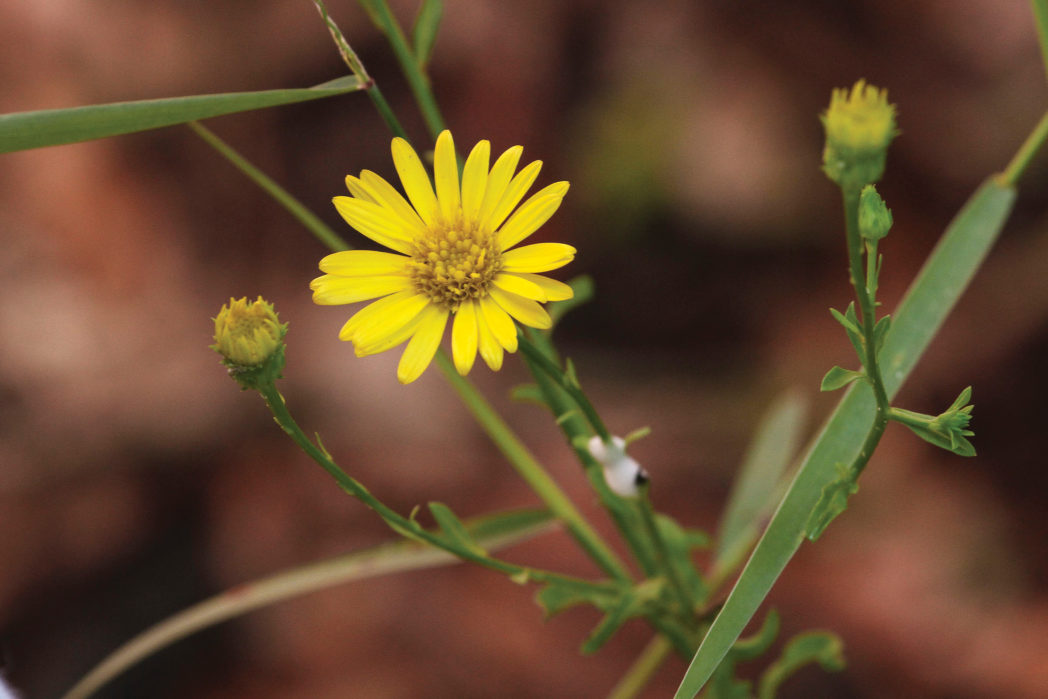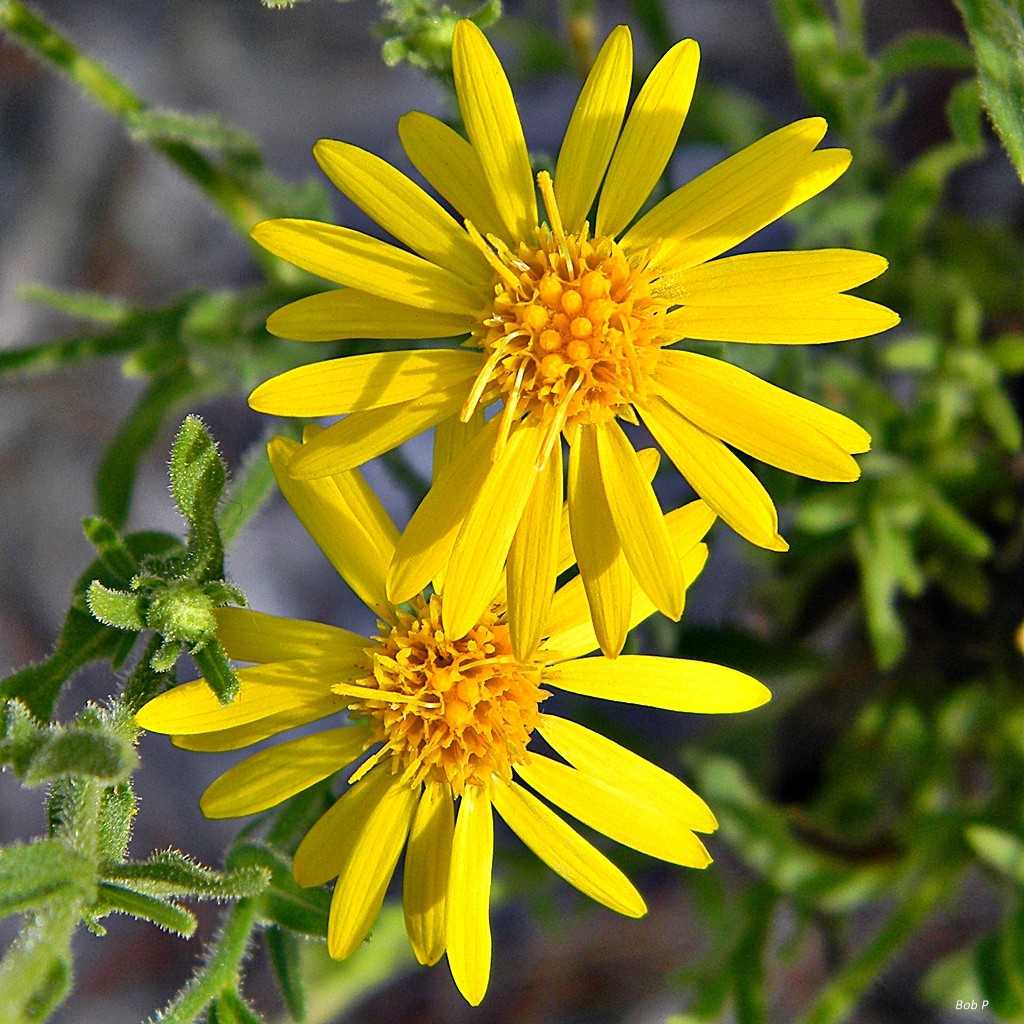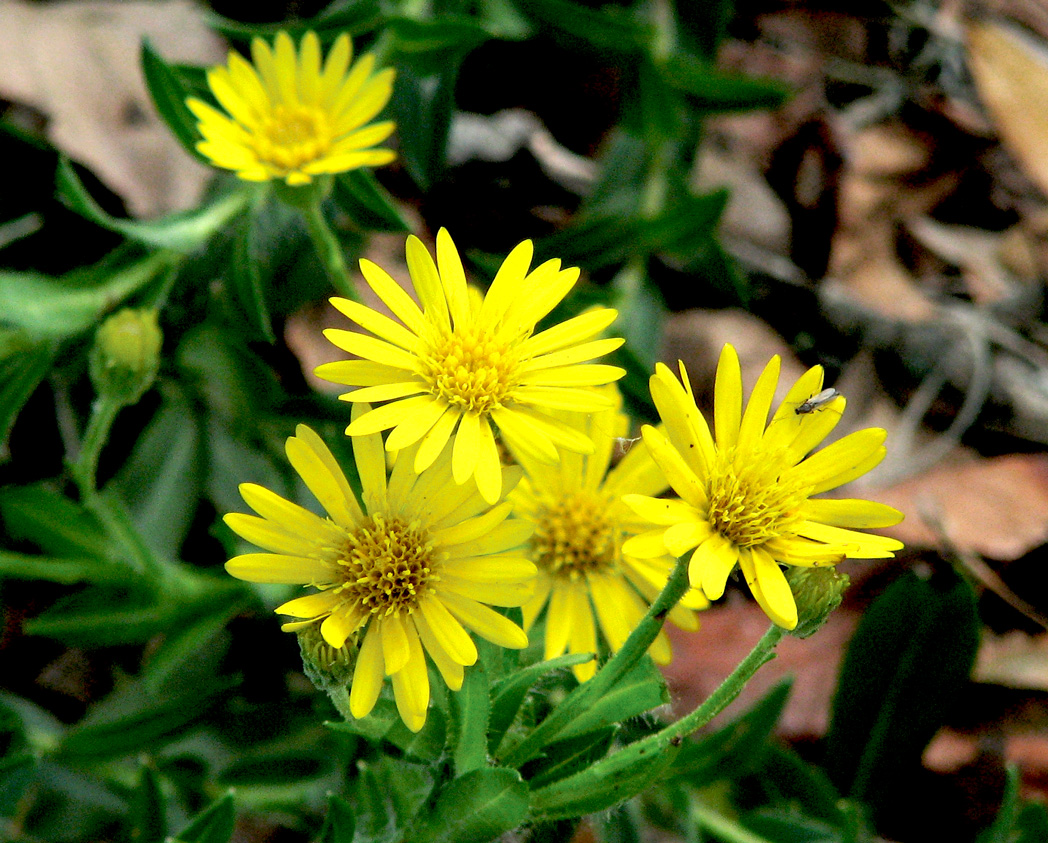Coastalplain goldenaster
Pictured above: Coastalplain goldenaster (Chrysopsis scabrella) by Ron Bynum. Click on terms for botanical definitions. View post as a PDF.
Coastalplain goldenaster (Chrysopsis scabrella) is a biennial herbaceous wildflower. Typically, a single flower stalk will arise from a basal rosette of leaves and produce one or more flat-topped and many-flowered inflorescences. Individual flowers are compound and consist of yellow-orange disk florets surrounded by bright yellow ray florets. Basal leaves are whitish-green, pubescent and spatulate with toothed margins. Stem leaves are sessile and scabrous (hence the species name scabrella). They are alternately arranged. Both flowers and leaves are often sticky to the touch. Lower leaves tend to dry out as the plant matures.
Coastalplain goldenaster typically blooms from late summer into late fall, but may bloom year-round. It occurs naturally in sandhills, scrub, flatwoods and ruderal areas. Worldwide, there are 11 species of Chrysopsis, all of which are found in Florida.
Chrysopsis comes from the Greek chrysos, meaning “golden,” and opsis, meaning “likeness or appearance,” referring to the color of the flower.
Family: Asteraceae (Aster, composite or daisy family)
Native range: Peninsular Florida south into Collier and Broward counties
To see where natural populations of Coastalplain goldenaster have been vouchered, visit florida.plantatlas.usf.edu.
Lifespan: Biennial
Soil: Dry, sandy soils
Exposure: Full sun to minimal shade
Growth habit: 2–3′ tall
Propagation: Seed
Florida regions of landscape suitability: North, Central, South
Garden tips: Coastalplain goldenaster is easy to grow and maintain in a landscape setting, but it is rarely available commercially. When in bloom, it is striking due to its many bright flowers.
Learn more about Coastalplain goldenaster from the Institute for Regional Conservation.
For more information on other Chrysopsis species, see these resources:



